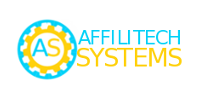Agile Scrum Methodology
Affilitech Systems uses Agile Scrum Methodology framework to facilitate iterative development and collaboration among cross-functional teams. This framework emphasizes delivering small, incremental improvements to a product. Scrum is characterized by specific roles, events and artifacts designed to streamline the development process
Scrum prescribes for teams to break work into tasks to be completed within time-boxed intervals, called sprints. Each sprint typically lasts two weeks. A person in charge of a scrum team is typically called a scrum master. The product owner creates a product backlog - a list of features, enhancements, and bug fixes. These items from the backlog are prioritized, scoped and assessed if they are ready to be assigned in sprint grooming meeting every other week. In Sprint Planning meetings, these items from the backlog that are groomed are assigned to team members.
The scrum team assesses progress in time-boxed, stand-up meetings of up to 15 minutes, called daily scrums. At the end of the sprint, the team holds two further meetings: one sprint review to demonstrate the work for stakeholders and solicit feedback, and one internal sprint retrospective. Story Points are used to assess the amount of work involved in a task. Velocity describes the pace of each sprint.
Scrum Roles
- Scrum Master: Acts as a coach. Ensures the team follows Scrum practices and removes any blockers the team may be facing.
- Product Owner: Represents the voice of the customer and ensures that the team delivers value to the business. This role prioritizes the Product Backlog.
- Development Team: Consists of resources from cross-functional teams . Responsible for delivering product enhancements at the end of each sprint.
Ceremonies
- Biweekly Sprint Planning: A meeting where the team determines what items from the product backlog are they going to work on during the sprint.
- Daily Sprint Standup: A quick daily meeting where team members report progress, identify any blockers and collaborate with others.
- Sprint Retrospective: A review session where the team talks about what went well during the concluding sprint and notes down areas for improvement.
- Sprint Grooming: Ongoing process where the team looks at items from the backlog, prioritizes and clarifies the requirement from the user.

Team Performance Indicators
- Story Points: A measure, usually number of hours to indicate the effort involved to complete a story. each team member's total story points should total to about 80 for a 2-week sprint.
- Velocity: Average number of story points completed by the team in recent sprints
